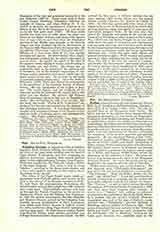

Puyallup Indians, an important tribe of Salishan linguistic stock, formerly holding the territory along the river of the same name entering near the head of Puget Sound, Washington, and now occupying an allotted reservation, together with several kindred tribes, in the neighborhood of Tacoma, Pierce County. Their near neighbors, the Nisqually, speak a dialect of the same language. The name is said to mean “shadow”, referring to the dense forest shades, and to have been applied originally to the country about the mouth of the stream.
The tribes of the Puget Sound region made acquaintance with Catholic priests and laymen as far back as the advent of the Spanish explorers in 1774-95, and from the accompanying Franciscans obtained rosaries and crucifixes which they still treasured sixty years later. This Catholic memory was kept up through the French Canadians in the service of Mackenzie, Fraser, and the Hudson Bay Company. In 1838 the secular missionaries, Norbert Blanchet and Modeste Demers, arrived on the Columbia from Canada, making headquarters at Fort Vancouver, from which point Father Demers in 1839-41 visited the tribes northward along Puget Sound, instructing and baptizing many. In 1843 another secular, Father Jean-Baptiste Bolduc, made another successful tour of Puget Sound and lower Vancouver Island. In 1847 arrived the first party of Oblates destined for the same mission, chief among whom was the famous Father Casimir Chirouse, the Apostle of Tulalip (d. 1891). In 1854 they joined with other tribes of that region in the treaty of Medicine Creek, by which they gave up their free range and agreed to come upon the reservation assigned them. In the next year they joined the Nisqually and others in the general outbreak of the Washington tribes, known as the Yakima War, which was not finally brought to an end until 1858, when the work of civilization and Christianization was again taken up; but it has been sadly checked by the demoralization consequent upon the removal of reservation restrictions under the recent Individual Allotment Act. Upon this point both official and mission authorities agree. With whiskey and pauperization by white swindlers the end seems not far off. More than half of the tribe are classed as Catholic, and besides the Government reservation school, the St. George mission school, established in 1888, and in charge of a secular priest assisted by six Franciscan sisters and a lay teacher, has an attendance of sixty pupils of the several confederated tribes. From perhaps 800 souls sixty years ago the Puyallup have decreased to 556 in 1900 and 461 in 1910. In aboriginal custom and belief they resembled the Tulalip tribes.
JAMES MOONEY

